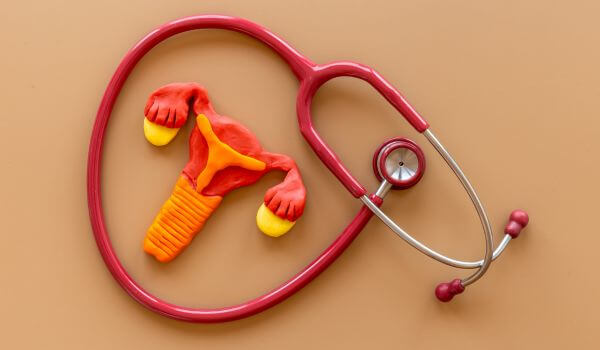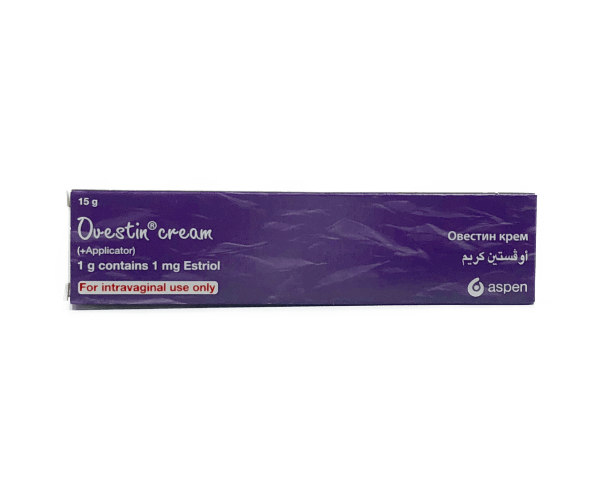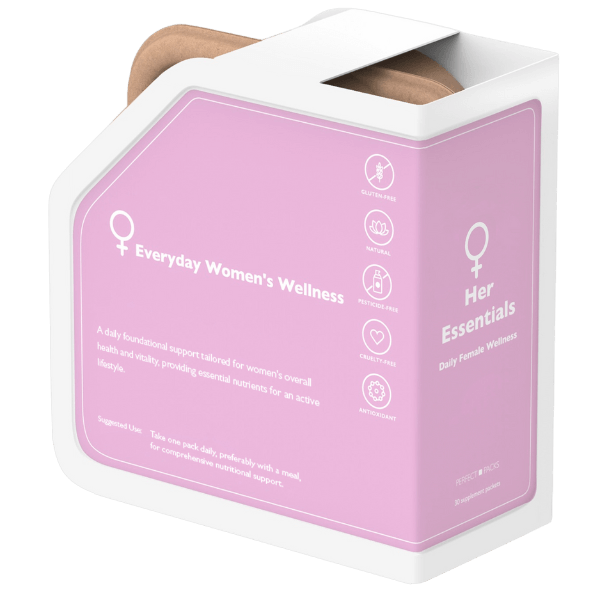Ovestin (estriol) treats estrogen deficiency that can cause vaginal disorders. It is a vaginal estrogen cream that supplies estriol, a naturally occurring estrogen (sometimes referred to as oestrogen). Estriol has a selective action on the cervix, vagina, and vulva. Ovestin is used in compounded hormone replacement medications approved to treat symptoms of hormone deficiency in menopause or after surgical removal of the ovaries.
Ovestin vaginal cream contains the active ingredient estriol, which is one of the naturally occurring forms of the primary female sex hormone estrogen that is naturally found in the body.
Estrogens work by binding to estrogen receptors in the body. Estrogen receptor alpha (ERα) is primarily found in the vagina, breast tissue, and ovaries. Estriol can be used as hormone replacement therapy (HRT) for women after menopause, specifically targeting ERα receptors.
As an effective treatment, Ovestin is applied directly to the vagina in the form of vaginal cream. Studies have shown that when it comes to treating the vaginal symptoms of menopause like dryness and itching, creams applied directly to the affected area are more effective than any other estrogen therapy forms. They also have the advantage that they can relieve vaginal symptoms without exposing the entire body to high doses of estrogen and be a safe way for women who cannot take other therapies.
Dosage
Follow the doctor’s instructions about when and how to use Ovestin. Ovestin comes with a clear plastic applicator. The normal dosage is to fill the applicator up to the ring mark and apply the full dose once each day for two to three weeks, and then twice a week. Applying the cream at night before bedtime is advised.
This text is for informational purposes only. Please consult with a doctor or pharmacist before using any medication.
Read the manufacturer’s product information leaflet that comes with the medication.
Reported side effects include:
- Menstrual cycle changes
- Spotting
- Dysmenorrhea
- Breast tenderness
- Nausea or vomiting
- Headache
- Weight gain
- Hair loss
- Vaginal itching
- Bloating
Not all possible side effects are listed here. If these or other unlisted symptoms persist or worsen, consult a healthcare provider or pharmacist.
Estriol can also interact with grapefruit juice, which may increase the risk of side effects.
There may be some irritation or itching of the skin in or around the vagina when the use of Ovestin begins – this should clear up after a few days. If not, stop usage immediately and consult a doctor.
Refer to a doctor immediately if any of the following serious side effects are noticed:
- Increased blood pressure
- The skin or whites of the eyes become yellow (jaundice)
- Suddenly developing migraine-type headaches
- There are signs of a blood clot
The doctor may decide to discontinue the use of the cream.
Declining levels of estrogen often affect the labia and the vagina’s delicate lining and can cause dryness, inflammation or itching, and vaginal atrophy or thinning. The distressing symptoms may include an increased susceptibility to vaginal or urinary infections and uncomfortable or painful intercourse. The decline is a natural outcome of aging in women. Ovaries produce substantially lower levels of estrogen with the onset of menopause, resulting in estrogen deficiency.
Ovestin vaginal cream contains the active ingredient estriol, which is one of the naturally occurring forms of the primary female sex hormone estrogen that is naturally found in the body. It is required for the treatment of vulvovaginal complaints related to estrogen deficiency.
Estriol can be used as hormone replacement therapy (HRT) for women after menopause or the performance of a surgical procedure called an oophorectomy. The development of ovarian cysts and the risk of developing ovarian cancer are the most common reasons for having an oophorectomy.















